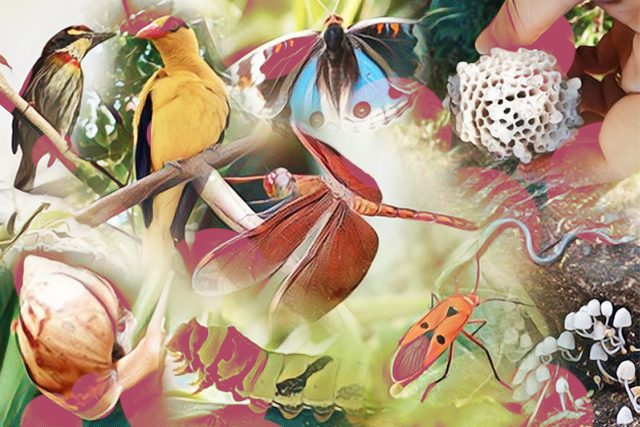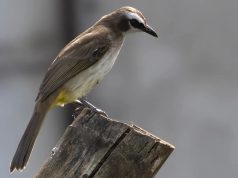
The Instagram account of The Ateneo Wild is gaining fame online for showcasing the wildlife and biodiversity that can be found in the Ateneo de Manila University campus in Loyola Heights, Quezon City.
Colorful birds, insects and mysterious fungi are among those that have been featured on the Instagram account, which currently has 523 followers.
It has since expanded into a Facebook page that thoroughly introduces the creatures it discovers and invites students to share their own discoveries on the campus.
Among its recent discoveries are a non-venomous snake and a snail that can grow to large sizes.
The Ateneo campus, which is partly located in the mountainous area near the Marikina Valley, contains patches of forest land and has become home to an assortment of animals.
A large monitor lizard or bayawak was caught by security personnel in the campus in July 2018, at the height of the rainy season.
In 2013, a new species of water beetle was discovered by biologists in one of the ponds inside the campus. It was named Hydraena ateneo after the school.
Wildlife within the city
The Ateneo Wild Project is not the only group in the Metropolis looking to conserve wildlife and nature in the concrete jungle.
It has a counterpart page based in nearby University of the Philippines Diliman campus.
Aside from showcasing its own assortment of critters, UP Wild also pays tribute to the ancient trees, creeks and natural structures in its campus.
One group of cyclists, the Firefly Brigade, meanwhile holds the annual “Tour of the Fireflies” to promote cycling as a sustainable and nature-friendly mode of transportation.
The group works with various clean air initiatives to spread its advocacy of educating commuters on the benefits of healthy, sustainable transportation in the bustling city.
The lack of fireflies in the city at nighttime, according to the group, is proof of how severe the air pollution problem in the city.
“The lack of fireflies in the city is only a testament to the polluted air we breathe. The fireflies have fled because of air pollution,” said Katti Sta. Anna of the Firefly Brigade in previous media interviews.
The disappearance of fireflies is not just a problem in Metro Manila.
Some environmental researchers have discovered that rapid urban expansion around the world has led to a decline in firefly populations in the past few decades due to light pollution, chemical waste and destruction of their natural habitat.—Artwork by Uela Altar-Badayos






